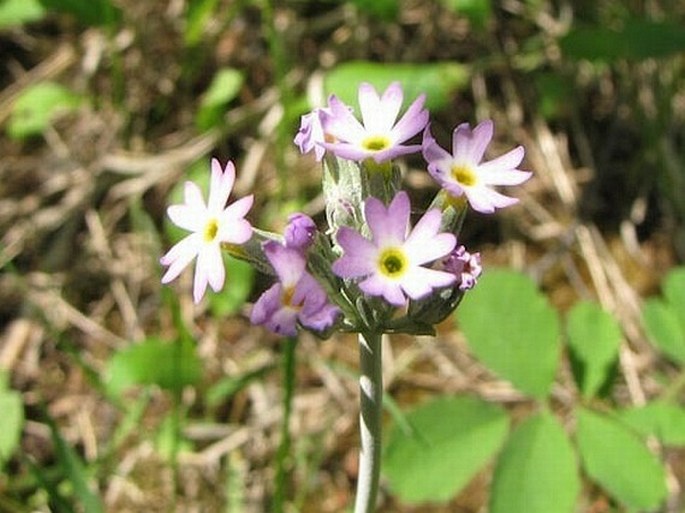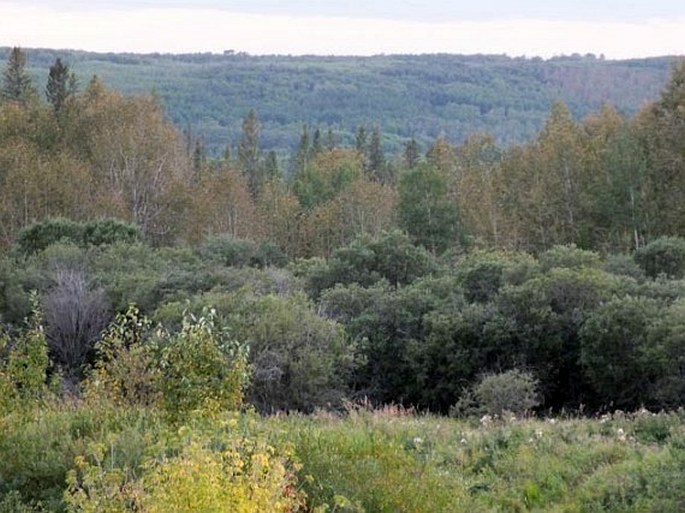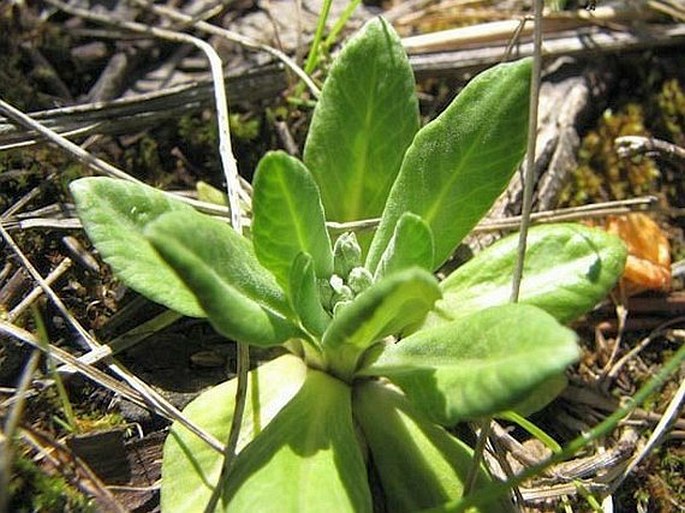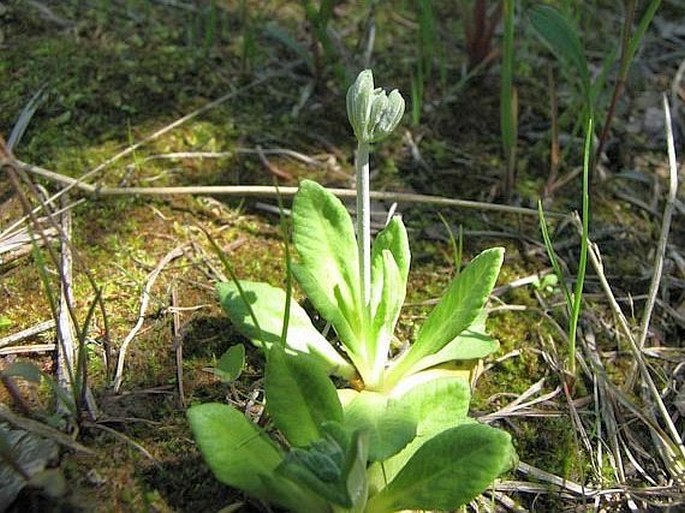Syn.: Primula americana Rydb. Primula farinosa subsp. incana (M. E. Jones) W. W. Sm. et Forrest, Primula farinosa var. incana (M. E. Jones) Fernald
Family: Primulaceae Vent.

Distribution: North American species found in area of Rocky Mountains, from central Alaska and southern Yukon to Colorado and Utah.
Ecology: Grows in moist meadows and rocks, along streams, from the coast to elevations up to 3500 m. Blooms from May to July.

Description: Perennial herb with short stem, (2–)10–46 cm cm tall. Basal leaves in a crowded rosette, petiolate, elliptical to oblanceolate, 1–6 × 0,3–1,6 cm, margins toothed, light green above, powdery white below (mealy). Inflorescence is terminal, simple umbel, 4–19-flowered; flowers pedicellate, calyx 4–10 mm long, green, corolla tube to 9 mm across, pale lilac to pink with yellow throat. Fruit is a ellipsoid capsule, 6–10 mm.
Use: In Europe it is used as a favourite perennial in the rockeries.



These images were taken in Canada, Alberta, Calgary, Griffith Woods Park (July 2012).


